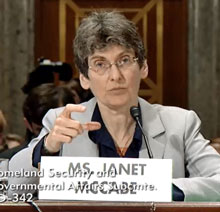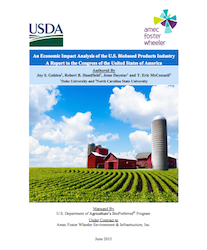 Escalating energy demand and improving wind turbine technologies are fueling the wind energy market and encouraging wind turbine installations. In turn, this is boosting the consumption of high-performance and lightweight blade materials, such as fibre, resins and core foam materials that can be used to increase blade length while keeping blade weight low. New analysis from Frost & Sullivan, finds that the market earned revenues of $1.94 billion in 2014 and estimates this to reach $3.78 billion in 2021.
Escalating energy demand and improving wind turbine technologies are fueling the wind energy market and encouraging wind turbine installations. In turn, this is boosting the consumption of high-performance and lightweight blade materials, such as fibre, resins and core foam materials that can be used to increase blade length while keeping blade weight low. New analysis from Frost & Sullivan, finds that the market earned revenues of $1.94 billion in 2014 and estimates this to reach $3.78 billion in 2021.- In honor of National Solar Day, Golden State Foods (GSF), one of the world’s largest suppliers to the quick service restaurant industry announced their adoption of solar energy to power pallet jacks and lift gates, extending the service life of lift gate electric batteries on their trucking fleet, thereby maximizing efficiency and minimizing the impact on the environment. By the end of 2015, each of the 10 Quality Custom Distribution centers will be equipped with trucks utilizing the solar panels.
- Nashville-based renewable energy provider Silicon Ranch Corporation and Green Power EMC have announced that construction is set to begin on Silicon Ranch’s 20MWAC project in southeast Georgia. Silicon Ranch has selected California-based Phoenix Solar to construct the ground-mounted solar project near Hazlehurst, Ga., in Jeff Davis County. Once completed, it will be one of the largest solar generating facilities in Georgia, occupying approximately 135 acres and incorporating over 89,000 solar modules.
- Together with Hanwha Q CELLS and other partners, the ISM Group ceremoniously started up one of the largest solar power plants in the Bitterfeld Region on Friday, June 19, 2015. The “Alte Kaserne Bitterfeld-Wolfen” photovoltaic farm achieves a total output of 10 MW. Altogether, the 38,456 Q.PRO-G3 solar modules will generate around 11 GWh of clean energy per year
Building Markets for Ethanol Exports
RFA Director of Regulatory Affairs Kelly Davis says they saw exceptional opportunities in Mexico. “I left very excited about a potential market beginning in 2016-17 for some corn ethanol exports,” said Davis.
The group met with PEMEX, the Mexican state-owned petroleum company, which Davis says has traditionally been against the idea of using corn ethanol for fuel but that may be changing. “Mexico has enacted an energy reform bill which opens their energy sector to competition,” said Davis. “We think this opens the market up to ethanol because it’s more price competitive compared to the oxygenate they now use which is MTBE.”
Davis says Japan currently has an E3 limit and most ethanol is blended into the supply as ETBE, “so technically they already use ethanol but they use ethanol as a feedstock to make ETBE and then use that as their blending agent.” There is some optimism that the market share of biofuels in Japan will continue to increase through the use of E10.
Learn more in this interview: Interview with RFA's Kelly Davis on ethanol trade mission trip
Senate Committee Grills EPA Official on RFS
 Environmental Protection Agency Acting Assistant Administrator Janet McCabe was the lone witness in a Senate Homeland Security Committee hearing Thursday on “Re-examining EPA’s Management of the Renewable Fuel Standard Program.”
Environmental Protection Agency Acting Assistant Administrator Janet McCabe was the lone witness in a Senate Homeland Security Committee hearing Thursday on “Re-examining EPA’s Management of the Renewable Fuel Standard Program.”
Committee chairman James Lankford (R-OK), who favors repealing the RFS, grilled McCabe over the “aspirational” goal of breaching the blend wall and the potential that volumes of cellulosic ethanol targets under law will have to be “reset” by the EPA because not enough is being produced.
Committee Ranking Member Heidi Heitkamp, who is a strong supporter of the RFS, was more concerned that the volume obligations for biofuels proposed by EPA “ignore Congressional intent and reduces Congressionally-mandated blend volumes, citing availability of distribution capacity.”
McCabe continued to defend the EPA’s recently proposed volume obligations for 2014, 2015 and 2016 as “ambitious but responsible” in the face of criticism from both sides of the issue.
GROWMARK FS Joins Propane Days at Capital
 Members of the GROWMARK and FS System were recent participants in the National Propane Gas Association’s (NPGA) 2015 Propane Days at the nation’s capital. This news release says the members were educated regarding affairs and legislation that affects the propane industry and how to be actively involved in its development.
Members of the GROWMARK and FS System were recent participants in the National Propane Gas Association’s (NPGA) 2015 Propane Days at the nation’s capital. This news release says the members were educated regarding affairs and legislation that affects the propane industry and how to be actively involved in its development.
“The Propane Days conference was a great opportunity to work with dedicated FS and GROWMARK experts as well as the Illinois Propane Gas Association. It was a privilege to work together and with our legislators toward the common goal of promoting propane as a clean, alternative fuel of choice,” explained Kevin Johnson, energy specialist with Heritage FS, Inc.
Attendees had the opportunity visit with their Congressional representatives to encourage the extension of key tax provisions, equalization of taxes on propane, and parity of propane relative to other auto fuels. The event also provided networking opportunities with other industry colleagues throughout the nation and a discussion with PERC staff to learn more about the national Propane Education and Research Council (PERC) efforts.
“I feel the Congressional visits will reward the industry for years to come. The visit to PERC was such an eye opening experience which yielded great information. I can’t wait to share my new found knowledge with my team back home,” said Chris Olson, LP and retail marketing manager with Illini FS.
Iowa RFA Polls Show Importance of RFS
 New polls from the Iowa Renewable Fuels Association (IRFA) show support for the federal Renewable Fuel Standard (RFS) and those presidential candidates friendly toward the RFS. This news release from the group says the RFS and renewable fuels will be key issues for Iowans in the 2016 general election.
New polls from the Iowa Renewable Fuels Association (IRFA) show support for the federal Renewable Fuel Standard (RFS) and those presidential candidates friendly toward the RFS. This news release from the group says the RFS and renewable fuels will be key issues for Iowans in the 2016 general election.
The poll, conducted by The Tarrance Group, shows “Iowa voters have an exceptionally favorable view of ethanol, with 72 percent favorable and only 11 percent unfavorable,” stated Tarrance Group President and CEO Ed Goeas. “This is virtually a universal opinion across geography and voter groups. Not a single subgroup of the electorate fails to hold a majority favorable opinion.”
Additionally, the poll results find that 57 percent of Iowa voters are less likely to support a candidate for public office who opposes an increase in ethanol use through the RFS. Similarly, 56 percent of voters oppose EPA’s recent proposal to reduce the RFS. Goeas noted, “Amazingly, not a single subgroup of the electorate favors this action.” He added, “[O]ur findings indicate that once voters hear the facts, the coalition against this is likely to grow.”
Meanwhile, this news release from the group shows that the top five Republican presidential candidates in the state are all backers of the RFS, with Wisconsin Governor Scott Walker leading the pack with 19 percent, followed by Ben Carson at 13 percent, Jeb Bush at 11 percent, Marco Rubio at 9 percent and Mike Huckabee at 8 percent.
“As we have seen in other credible surveys of Republican caucus goers, Wisconsin Governor Scott Walker continues to set the pace in Iowa,” stated TheIowaRepublican.com Editor-in-Chief Craig Robinson. “In one way or another, each the top five candidates in the poll have either publicly expressed support of leaving the current RFS in place or have backed an infrastructure grant program that would help ensure that consumers are allowed choice at the gas pump. These are vital issues to Iowa’s economy and it should no surprise that the 2016 candidates who understand the importance of renewable fuels issues are in the top tier of the poll.”
USDA Releases Biobased Economic Report
The U.S. Department of Agriculture has released a new report, “Economic Impact of the Biobased Product Industry,” that finds each job in the biobased products industry is responsible for generating 1.64 jobs in other sectors of the economy. The report states in 2013, 1.5 million jobs directly supported the biobased product industry, resulting in 1.1 million indirect jobs in related industries, and another 1.4 million induced jobs produced from the purchase of goods and services generated by the direct and indirect jobs.
Agriculture Secretary Tom Vilsack today announced the release of a new report as well as discussed changed under the 2014 Farm Bill that will create additional opportunities for growth in renewable plant-based materials.
 “This report is the first to examine and quantify the effect of the U.S. biobased products industry from an economics and jobs perspective. Before, we could only speculate at the incredible economic impact of the biobased products industry. Now, we know that in 2013 alone, America’s biobased industry contributed four million jobs and $369 billion to our economy,” Vilsack said. “Today, we are also adding to the number of innovative products carrying USDA’s BioPreferred® label and expanding options for our nation’s biorefineries. This means small businesses and global companies alike can continue to harness the power of America’s farms and forests to create new and innovative biobased products that are used all around the world.”
“This report is the first to examine and quantify the effect of the U.S. biobased products industry from an economics and jobs perspective. Before, we could only speculate at the incredible economic impact of the biobased products industry. Now, we know that in 2013 alone, America’s biobased industry contributed four million jobs and $369 billion to our economy,” Vilsack said. “Today, we are also adding to the number of innovative products carrying USDA’s BioPreferred® label and expanding options for our nation’s biorefineries. This means small businesses and global companies alike can continue to harness the power of America’s farms and forests to create new and innovative biobased products that are used all around the world.”
The report builds on the “Why Biobased?” report released by the USDA in October 2014. Estimates are that the use of biobased products currently displaces about 300 million gallons of petroleum per year – equivalent to taking 200,000 cars off the road.
The Secretary also announced changes to include new forest products in the BioPreferred program, along with proposed changes to the former Biorefinery Assistance Program to assist in the development of cutting-edge technologies for advanced biofuels, renewable chemicals, and biobased product manufacturing.Read More
BioEnergy Bytes
 Waaree Energies Ltd has announced commissioning of its 10 MW solar power plant for Sharda Construction and Corporation Pvt Ltd (SCCPL), a construction major based in Nanded, Maharashtra. The project located at Latur, Maharashtra was allotted to SCCPL under the Domestic Content Requirement (DCR) category of Jawaharlal Nehru National Solar Mission’s Phase 2, Batch 1.
Waaree Energies Ltd has announced commissioning of its 10 MW solar power plant for Sharda Construction and Corporation Pvt Ltd (SCCPL), a construction major based in Nanded, Maharashtra. The project located at Latur, Maharashtra was allotted to SCCPL under the Domestic Content Requirement (DCR) category of Jawaharlal Nehru National Solar Mission’s Phase 2, Batch 1.- Nomadic Power has received a grant of EUR 2 Million from the European Commission for their “MobileBattery” project. Range extension, fast charging options and functions for intelligent energy management of PV systems are incorporated in “Nomads”. Nomad capacities range from 40 up to 85 kWhs. Nomads can collect the solar energy of the photovoltaic system during the week, and on the weekend the owner of an electric car, through the connected Nomad, has an extended range of over 500 kilometers.
- The 20th Century model of large baseload electricity generation, including nuclear reactors, is in an irreversible decline in the face of the emerging 21st Century decentralized power model relying on renewables, energy efficiency, and technology-based demand management, according to a new report by Mark Cooper, senior fellow for economic analysis, Institute for Energy and the Environment, Vermont Law School. The Cooper report, “Power Shift: The Deployment of a 21st Century Electricity Sector and the Nuclear War to Stop It,” is available online.
- Renewable Edge reached a milestone when it installed it’s 1000th Integrated Wireless Solar Payphone Power Supply System Kit to New York City payphones. Renewable Edge’s patent pending Solar Power Supply System replaces the utility grid power connection previously needed to operate New York City payphones with a solar powered battery system powering wireless routers that communicate with existing cell towers.
BayWa r.e.’s Beethoven Wind Project in Operation
The Beethoven wind project located in South Dakota is in full operation. BayWa r.e. bought the project from a local developer in August 2014. The power is sold under a 20 year contract to NorthWestern Energy and GE has been engaged to maintain the turbines for the next 10 years.
 “The 80 MW Beethoven Project is the largest wind project brought online in the US and the second largest one in BayWa r.e.’s history worldwide. Its output will supply clean, reliable, renewable energy to 31,000 homes.” said Matthias Taft, CEO of BayWa r.e. and BayWa AG board member for the energy sector. “The completion of Beethoven is an important milestone and we are on to the next project. As we continue to seek out the next opportunity, we welcome any introduction to exciting projects.” said Florian Zerhusen, CEO of BayWa r.e.’ wind business in the US.
“The 80 MW Beethoven Project is the largest wind project brought online in the US and the second largest one in BayWa r.e.’s history worldwide. Its output will supply clean, reliable, renewable energy to 31,000 homes.” said Matthias Taft, CEO of BayWa r.e. and BayWa AG board member for the energy sector. “The completion of Beethoven is an important milestone and we are on to the next project. As we continue to seek out the next opportunity, we welcome any introduction to exciting projects.” said Florian Zerhusen, CEO of BayWa r.e.’ wind business in the US.
In 2014, BayWa r.e. sold two operational renewable energy projects located in New Mexico but is still managing the facilities.
Ethanol Report from Washington DC
 Domestic Fuel stopped by the Renewable Fuels Association (RFA) office in Washington DC Wednesday to visit with president and CEO Bob Dinneen and discuss the latest with the Renewable Fuels Standard (RFS) and expectations for next week’s EPA hearing in Kansas City.
Domestic Fuel stopped by the Renewable Fuels Association (RFA) office in Washington DC Wednesday to visit with president and CEO Bob Dinneen and discuss the latest with the Renewable Fuels Standard (RFS) and expectations for next week’s EPA hearing in Kansas City.
Following his appearance on a Fuels America press call, Dinneen addressed yet another bill introduced this week to repeal the RFS and renewed charges by RFS opponents that the law is increasing food prices.
 Regarding the June 25 public hearing on EPA’s proposed volume obligations under the RFS, Dinneen says the agency has already received about 250 requests to testify and he is encouraging everyone possible to turnout. “I want chaos, I want farmers that care about what this proposal would mean for their bottom line, I want consumers that care about the fact that gasoline prices will increase if this proposal is finalized, I want ethanol producers there, I want biodiesel producers there, I want anybody that cares about our nation’s energy, economic and environmental future to show up in Kansas City and throw a hissy fit,” said Dinneen.
Regarding the June 25 public hearing on EPA’s proposed volume obligations under the RFS, Dinneen says the agency has already received about 250 requests to testify and he is encouraging everyone possible to turnout. “I want chaos, I want farmers that care about what this proposal would mean for their bottom line, I want consumers that care about the fact that gasoline prices will increase if this proposal is finalized, I want ethanol producers there, I want biodiesel producers there, I want anybody that cares about our nation’s energy, economic and environmental future to show up in Kansas City and throw a hissy fit,” said Dinneen.
Listen to or download the Ethanol Report here: Ethanol Report from Washington DC
Schroeder to Participate in Bioenergy 2015
 Domestic Fuel’s own Joanna Schroeder will be part of next week’s U.S. Department of Energy’s (DOE’s) Bioenergy Technologies Office’s (BETO) eighth annual conference “Bioenergy 2015: Opportunities in a Changing Energy Landscape.” She’ll be in Washington, D.C., moderating the session titled, “Reaching Your Stakeholders: Effectively Engaging and Educating Key Audiences,” on the second day of the June 23-24 conference.
Domestic Fuel’s own Joanna Schroeder will be part of next week’s U.S. Department of Energy’s (DOE’s) Bioenergy Technologies Office’s (BETO) eighth annual conference “Bioenergy 2015: Opportunities in a Changing Energy Landscape.” She’ll be in Washington, D.C., moderating the session titled, “Reaching Your Stakeholders: Effectively Engaging and Educating Key Audiences,” on the second day of the June 23-24 conference.
This session focuses on demonstrated communication strategies and tactics to engage and educate key audiences—such as the general public, communities, policy makers, and investors—on bioenergy. Panelists, through a facilitated discussion, will provide attendees with unique insights, success stories, and best practices and lessons learned that improved public perception of bioenergy at local, regional, and national levels.
About 600 participants are expected to attend the conference, including key stakeholders from the bioenergy industry, Congress, national laboratories, academia, and the financial community. Some of the other issues they’ll discuss include:
– Impact of changing oil prices
– Vehicle/fuels co-optimization
– Future of the Renewable Fuel Standard
– Environmental benefits of biofuels
– Innovative technologies and emerging pathways
– U.S. manufacturing in a global marketplace.
Check out the full agenda here.


